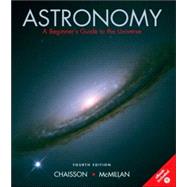
| Foundations | |
| Exploring the Heavens: Introduction | |
| The Copernican Revolution: The Birth of Modern Science | |
| Light and Matter: The Inner Workings of the Cosmos | |
| Telescopes: The Tools of Astronomy | |
| Our Planetary System | |
| The Solar System: Interplanetary Matter and the Birth of the Planets | |
| Earth and Its Moon: Our Cosmic Backyard | |
| The Terrestrial Planets: A Study in Contrasts | |
| The Jovian Planets: Giants of the Solar System | |
| Moons, Rings, and Pluto: Small Worlds Among Giants | |
| The Stars | |
| The Sun: Our Parent Star | |
| Measuring the Stars: Giants, Dwarfs, and the Main Sequence | |
| The Interstellar Medium: Star Formation in the Milky Way | |
| Stellar Evolution: The Lives and Deaths of Stars | |
| Neutron Stars and Black Holes: Strange States of Matter | |
| Galaxies and the Universe | |
| The Milky Way Galaxy: A Grand Design | |
| Normal and Active Galaxies: Building Blocks of the Universe | |
| Hubblersquo;s Law and Dark Matter: The Large-Scale Structure of the Cosmos | |
| Cosmology: The Big Bang and the Fate of the Universe | |
| Life in the Universe: Are We Alone? | |
| Table of Contents provided by Publisher. All Rights Reserved. |
The New copy of this book will include any supplemental materials advertised. Please check the title of the book to determine if it should include any access cards, study guides, lab manuals, CDs, etc.
The Used, Rental and eBook copies of this book are not guaranteed to include any supplemental materials. Typically, only the book itself is included. This is true even if the title states it includes any access cards, study guides, lab manuals, CDs, etc.